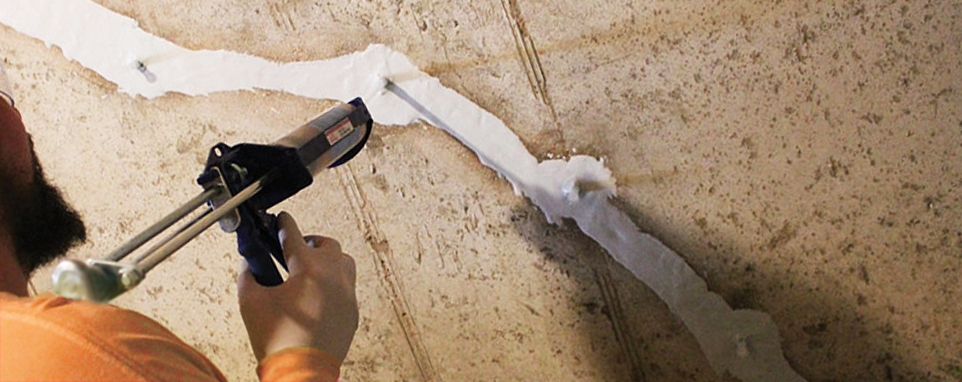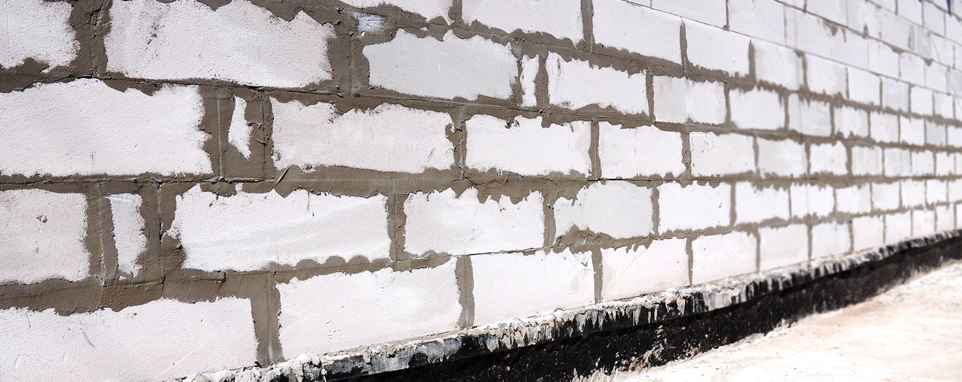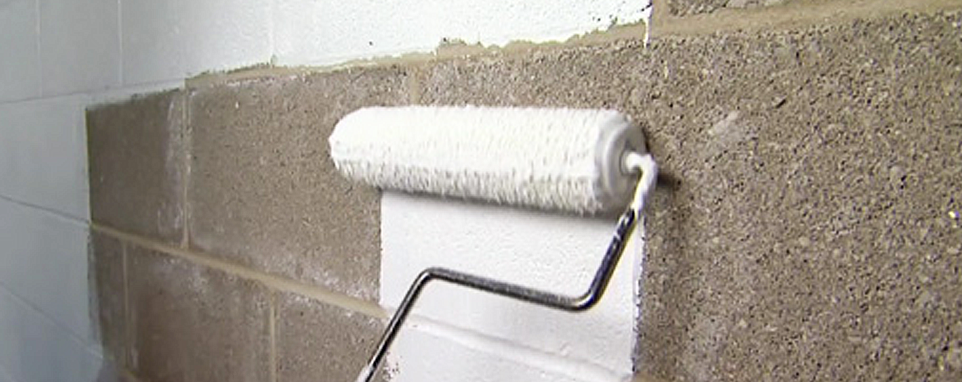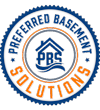 CRACK INJECTIONS
CRACK INJECTIONS
Concrete has the potential to shrink and crack as water migrates out during the hydration phase of the curing process. Concrete shrinkage is the most common cause, but cracks can also be caused by a number of varying issues. Structural cracks usually result from settlement, horizontal loading, hydrostatic pressure, or heavy machinery operating too closely to your foundation.
While most foundation wall cracks are not necessarily structural concerns, water intrusion almost certainly will be. Cracks in excess of ⅛ inch width or ⅛ inch of lateral displacement in poured walls should be addressed by a repair professional. Narrower cracks measuring ⅛ inch or less with no lateral separation or apparent leaking usually do not require any action.
At Preferred Basement Solutions, we employ the epoxy injection method to repair non-structural wall cracks that are leaking. This method is performed from the inside of your home and is far less intrusive than excavating around your home’s foundation. The injection process delivers epoxy into the crack under pressure, pushing the material from the inside completely through to the outside of the wall. It is considered a structural repair and will create a watertight seal in the crack inhibiting the passage of water.
So, if your poured concrete foundation walls crack and begin to leak, then an epoxy injection may be the solution to solving the problem!

FREE BASEMENT INSPECTIONS!
 FOUNDATION REPAIR
FOUNDATION REPAIR
We have all heard the saying that “anything that is going to last must begin with a strong foundation.” It is the single most important element in your home’s construction with the rest of the house resting upon it. When your foundation experiences problems, it has the potential to cause problems throughout the rest of your home. Routine maintenance and inspections can help catch any potential problems before they have the opportunity to escalate any further.
There are many factors that can negatively impact your home’s foundation. Once foundation problems start, they often lead to other problems. Waiting to address these issues will eventually increase the cost of repairs as they will only get worse over time. Some common factors that can cause foundation issues are:
- Poor Drainage – Allows soil to become excessively saturated causing hydrostatic pressure.
- Hydrostatic Pressure – Pressure exerted by a column of water due to gravity. The deeper the column of water is, the higher the amount of pressure will be.
- Expansive Soils – Have the potential to shrink and swell subjecting your foundation to possible movement.
- Seasonal Weather Changes – Dry and wet cycles can contribute to the expansion and contraction of soils.
- Upheaval – Upward movement of a structure or foundation caused by frost or expansive soils.
- Settlement – Improper compaction during construction leaves the potential for settlement as the supporting soil consolidates.
- Plumbing Leaks – Have the potential to create excessive moisture in specific areas around your foundation.
- Tree Roots – Large tree roots too close to the foundation can absorb large amounts of water creating the potential for the soil to shrink excessively.

As you can see, in one way or another, water is the driving force that causes many foundation problems. This illustrates the need for homes to have a proper drainage system in place. While some issues are merely cosmetic in nature, others will require immediate attention as they may have the potential to affect the structural integrity of your foundation. Some common signs of foundation problems are:
- Cracks in interior or exterior walls
- Bowing or deflection in interior walls
- Uneven or sloping floors and counter-tops
- Doors or windows that stick open or closed
- Cracks appearing around door and window openings
- Walls separating from the house
Catching foundation issues early and repairing them appropriately is vital to maintaining the structural integrity and value of your home. At Preferred Basement Solutions, we will thoroughly inspect and evaluate all factors involved with your foundation issue in order to accurately diagnose its initial cause. Once the actual cause of the issue is found, then the appropriate lasting solution can be determined.
 I-Beams
I-Beams
The stability of your home depends largely in part to the condition of your home’s foundation. Many factors can impact the structural integrity of your foundation walls and be indicative of other problems as well. In many cases, homes that are lacking proper drainage can experience excessive hydrostatic pressure that exceeds the design capacity of the foundation walls causing them to bow, lean, or shear. Foundations not set at the appropriate frost depth or those built on expansive soils are also at risk of experiencing these problems.
In these situations, it is crucial to employ a system to stabilize the foundation wall to prevent any further movement or the possibility of total wall failure.
While there are different methods of achieving wall stabilization, we recommend doing so with steel I-Beam reinforcement. This proven method of stabilization is both certified and recommended by engineers as a permanent solution.
With this method, a small portion of concrete is jackhammered and removed from the basement slab to expose the footer. A W4x13 steel I-Beam is then placed on top of the footer and extended into the floor joists above where it is then braced and blocked securely with appropriate hardware. New concrete is then placed in the pocket around the base of the I-Beam anchoring it in place for maximum strength.
While this method will effectively stabilize your foundation wall, it is imperative to determine and address all relevant factors that initially caused this issue. Identifying and correcting problems early on could possibly save you thousands in repair costs later!

 Bowed Walls
Bowed Walls
The structural integrity of your home is largely dependent on the strength, integrity, and construction of its foundation. When your foundation walls begin to noticeably bow, it can be quite concerning. This issue is actually more common in older homes than you might think.
Bowed foundation walls could be caused by many different factors. The most common of those causes is “Hydrostatic Pressure” or the pressure that is exerted by a fluid against a given point. When the soil around your foundation becomes saturated, the hydrostatic pressure begins to build. The more saturated the surrounding soil is, the greater the amount of hydrostatic pressure that is present due to gravity exerting downward force. This illustrates the need for proper foundation drainage. Exterior foundation drainage greatly helps to relieve this pressure but is not always installed or in good working condition. Over time, this pressure will cause the foundation walls to exceed their designed load capacity and ultimately fail.
At Preferred Basement Solutions, we are able to safely and permanently stabilize bowed foundation walls using steel I-Beam reinforcement. While this recommended method of repair will effectively stop any further wall deflection, it is imperative to accurately identify and address all drainage or waterproofing factors that led up to this issue in order to find a lasting solution.

 Wall Rebuild
Wall Rebuild
In extreme cases where the structural integrity of a foundation wall has been compromised and stabilization is no longer an option, rebuilding parts of or the entire wall may be the only solution. It is important to determine and address all relevant factors that initiated the failure of the wall in order to determine a lasting solution. A determination should also be made as to your drainage and waterproofing requirements or needs while your foundation will be excavated.
In order to facilitate this process, heavy machinery would need to be brought in and the soil around your home would be excavated to expose the foundation. Temporary bracing and supports would then be erected to relieve the pressure from the affected wall, enabling our team to remove and rebuild the damaged wall or portion of wall. Once the wall is rebuilt, all temporary framing is removed and all excavation is properly backfilled. A grade conducive to proper drainage is re-established around your foundation and all efforts are made to restore your yard as much as possible.
REQUEST A QUOTE
 WALL TREATMENTS
WALL TREATMENTS
When most people think of ways or areas in which to improve their homes, the basement walls are usually not very high on the list. Most basements are overlooked or disregarded unless an issue arises that is in need of a repair. Fact is, even unfinished basements can be transformed into bright, attractive areas of your home by simply applying a wall treatment. This could make all the difference when selling your home as a potential buyer’s overall impression could be greatly influenced by the appearance of this space. In some cases, a particular wall treatment may be a necessary solution to a basement issue. Walls that are damaged, cracked, or leaking may require additional repairs before a treatment can be applied.
There is a variety of different products on the market today to handle most any situation. A few examples of these products include:
- Cementitious coatings that can eliminate surface irregularities
- Acrylic latex coatings that are specially formulated to build up a uniform textured appearance.
- Epoxy resin coatings that can produce protective damp proofing vapor barriers
- Moldicides that can eliminate molds and bacteria
- Crystalline treatments that have the ability to waterproof and seal concrete


